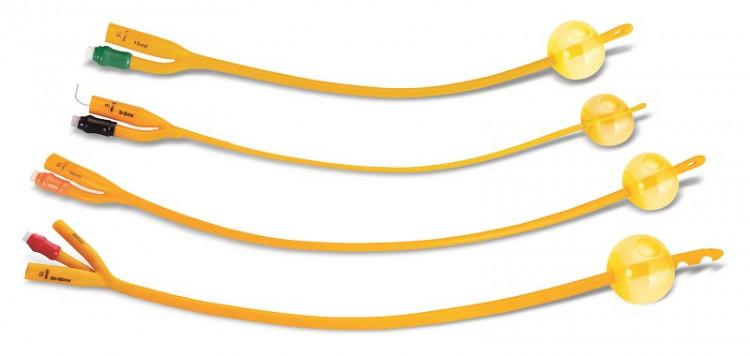Sponsorizzato
Understanding Foley Catheters: An Overview of These Critical Medical Devices

What are Foley Catheters?
Foley catheters are flexible tubes that are inserted through the urethra and into the bladder to drain urine. Made out of silicone or latex, they have an inflatable balloon at the tip that is filled with sterile water once inserted to hold the catheter securely in place. Catheters come in various sizes depending on the patient's anatomy.
Uses of Foley Catheters
Foley catheters have several important medical uses:
- Post-surgery Drainage: After many types of surgeries involving the bladder, kidneys, prostate or other parts of the urinary tract, a Foley Catheters is inserted to allow urine to drain and accurately measure urinary output. This is important for monitoring a patient's recovery.
- Urinary Retention: If a patient is unable to urinate on their own due to issues like an enlarged prostate, a Foley catheter provides an outlet for urine to drain from the bladder, preventing uncomfortable urinary retention.
- Incontinence: In some cases where incontinence makes it difficult to control bladder emptying, a Foley catheter offers continuous drainage to keep the bladder empty. This can help reduce accidents.
- Intensive Care Monitoring: Critically ill patients in the ICU are often given Foley catheters so nurses can closely monitor urine output, which can provide important cues about a patient's hydration and kidney function status.
- Pain Management: A catheter may allow the bladder to rest in certain conditions like urinary tract infections that cause pain or discomfort with urination.
- Neurological Issues: Patients with neurological conditions affecting bladder control like spinal cord injuries, multiple sclerosis or stroke may require a catheter for long-term bladder management.
Benefits and Risks of Catheters
While extremely useful for certain medical situations, catheters also carry risks if left in place for extended periods:
Benefits:
- Allow accurate monitoring of urinary output
- Drainage relief for those unable to urinate
- Prevent urinary retention and incontinence issues
Risks:
- Infection risk rises with longer indwell times
- Irritation and urethral trauma possible with inflation/deflation
- Blockage may occur from mineral buildup or kinks in tubing
- Self-catheterization over time can damage the urethra
As such, most experts recommend catheters only be used when truly necessary and removed as soon as patients are able to urinate independently if possible. Strict sterile technique for insertion and maintenance also helps prevent complications.
Types of Foley Catheters
Several types of Foley catheters exist to meet different clinical needs:
- Straight Tip: The most common design with a straight tip and port for balloon inflation.
- Coude Tip: Has a curved tip that is sometimes easier for males to insert. Useful after surgeries.
- Indwelling: Designed for short or long-term indwelling use, usually 1-30 days. Should be changed regularly.
- Intermittent: Intended for periodic in-and-out drainage rather than permanent placement. Better for short-term use.
- Pediatric: Smaller sizes made specifically for children and infants to prevent trauma. Must fit properly.
- Silicon/Latex: Made of silicone, silicone-coated latex or pure latex tubing. Patients with latex allergy require silicon only.
- Retention: Have a retention strap on the drainage bag for bedridden patients needing long-term catheterization.
Correct catheter selection based on a patient's circumstances helps maximize benefits and reduce risks associated with indwelling catheter use.
Catheter Insertion and Care Process
Successful and uneventful catheter use begins with proper insertion following these general guidelines:
- Gather supplies and perform hand hygiene in sterile environment. Open catheter package and inflate balloon per instructions.
- Gently insert lubricated catheter tube into urethra and slowly slide into bladder. Listen for urine to began draining out catheter.
- Inflate balloon as directed with sterile water, usually 5-30mL depending on catheter type and patient factors. Do not over inflate.
- Secure catheter tubing to leg so it does not pull on urethra. Attach to closed drainage system. Record amount and characteristics of output.
- Change collection bag regularly, disinfect port caps, keep tubing kink-free. Clean genitals daily with mild soap and dry thoroughly.
- Monitor for signs of infection like fever, flank pain, burning on urination. Report any issues promptly.
- Deflate balloon before gentle removal and discard catheter according to biowaste guidelines.
With the right catheter selection and fastidious sterile care, these important devices can effectively help manage various urological conditions. But infection risks remain, so non-essential use should always be avoided.
Foley catheters are versatile medical tubes used for bladder drainage in multiple clinical situations. When properly cared for for legitimate medical need, they effectively empty the bladder. However, risks like infection arise with longer indwell times, so non-essential use is not recommended. Through sterile technique and regular changes when needed for days or weeks, catheters continue serving an important supportive role for urological patients worldwide.
Get this Report in Japanese Language:
Get this Report In Korean Language:
About Author:
Alice Mutum is a seasoned senior content editor at Coherent Market Insights, leveraging extensive expertise gained from her previous role as a content writer. With seven years in content development, Alice masterfully employs SEO best practices and cutting-edge digital marketing strategies to craft high-ranking, impactful content. As an editor, she meticulously ensures flawless grammar and punctuation, precise data accuracy, and perfect alignment with audience needs in every research report. Alice's dedication to excellence and her strategic approach to content make her an invaluable asset in the world of market insights.
(LinkedIn: www.linkedin.com/in/alice-mutum-3b247b137 )



